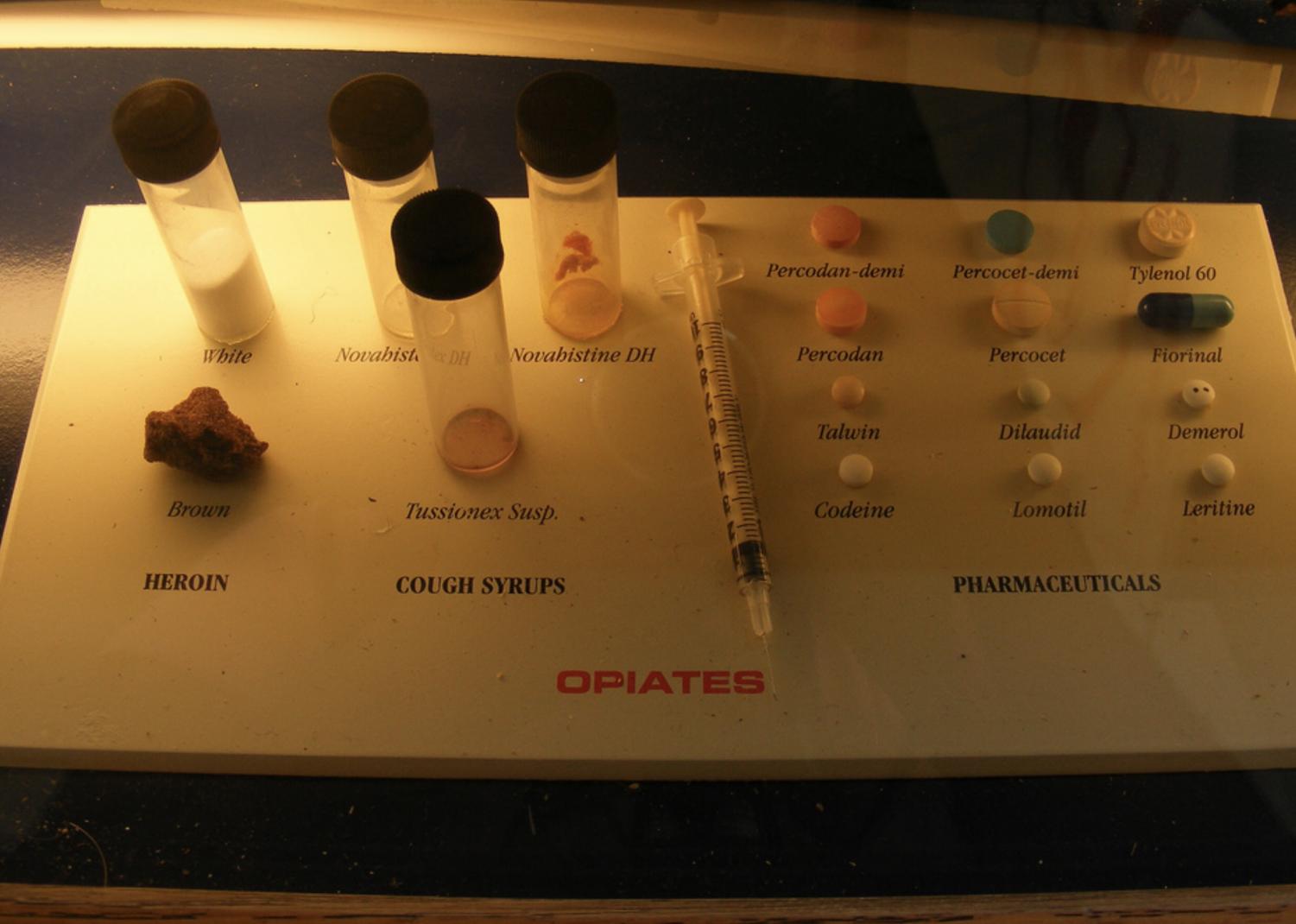The Growing Opiate Epidemic
Ohio among states hardest hit.
John Krainz of the “New York Times” notes, “Drug overdoses killed roughly 64,000 people in the United States last year, according to the first governmental account of nationwide drug deaths to cover all of 2016.” The opiate epidemic has been on the rise since 2010 and has continued to affect individuals and those around them. People are getting their hands on any type of high, whether the drug is prescribed by a doctor or sold by a drug dealer.
The U.S. Department of Health and Human Services (HHS) asserts that in America, 116 people die due to overdosing daily, while 11.5 million people misuse prescription opiates. According to the National Institute of Drug Abuse (NIH), “In 2013, 6.5 million Americans aged 12 or older (or 2.5 percent) had used prescription drugs non-medically in the past month.”

This display of opiates, from the Police Museum in Toronto, shows the many different forms this potentially dangerous drug can take.
Ohio ranks second in deaths due to drug overdose in the U.S. The Ohio Department of Health states, “In 2016, unintentional drug overdoses caused the deaths of 4,050 Ohio residents, a 32.8 percent increase compared to 2015…. ” Many of those deaths were due to heroin laced with carfetanil, a tranquilizer typically used on elephants.
Stimulants and anti-depressants can absolutely become addictive and be abused, but it is the abuse of opiates (painkillers) that have reached epidemic proportions in the U.S.
Opiates are meant to be used to treat chronic pain or injuries and fall into three categories.
- “Natural opiates” are derived from the poppy seed and include prescription drugs such as codeine and morphine.
- “Synthetic opiates” are manufactured drugs, including demerol and fentanyl.
- “Semisynthetic opiates” contain small portioned amounts of opium mixed with synthetic agents. Among these are oxycodone and hydrocodone.
Some of the abuse of opiates can be linked to pharmaceutical companies and doctors who are overprescribing medications. HHS asserts “In the late 1990s, pharmaceutical companies reassured the medical community that patients would not become addicted to opioid pain relievers and healthcare providers began to prescribe them at greater rates.” But patients have become reliant on such pain relief, often becoming addicted.
Another cause of opiates is people receiving drugs through drug dealers. Illegal drugs continue to flood into the country or are manufactured here. These opiates are particularly dangerous because they can contain any number of harmful ingredients such as carfetanil.
To combat this growing epidemic, “in 2017 HHS declared a public health emergency and announced a 5-Point Strategy To Combat the Opioid Crisis.” This plan includes “improving access to treatment and recovery services…and advancing better practices for pain management.” As a result, there has been more awareness of the epidemic and increasing calls for support for research into pain and addiction.
For example, Ohio received $7,438,746 of federal aid to fund 43 health centers in the state. This has led to improving access to treatment centers and the use of overdose-reversing drugs. In addition, the facilities have received increasing personnel, newer technology, and better treatment for the patients.
Tragically, children are getting their hands on drugs, a growing concern for parents and schools. Schools are beginning to incorporate wellness programs to prevent students from turning to drugs. Drug testing has become more common in both public and private schools.
Deaths and overdoses, due to both prescription and non-prescription sources, continue to rise at catastrophic rates. People need to educate themselves about the deadly dangers of using opiates. The government, the health care community, and society as a whole must dedicate significant resources to reverse this situation.









